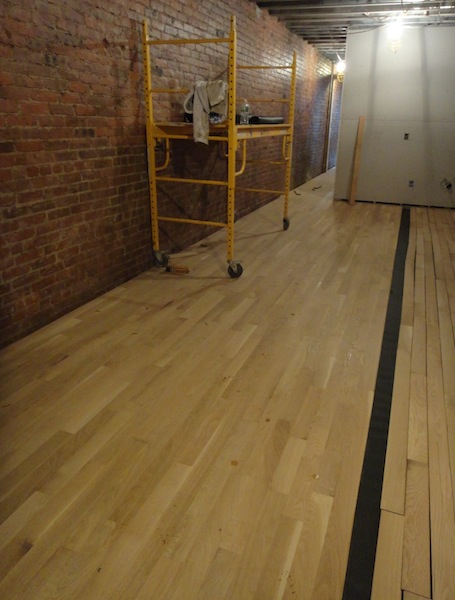I went to the house rather early yesterday morning – at about 7:45, just after the sun came up. I walked into the house and it was pretty warm inside despite the fact that it was 42 degrees and windy outside and we don’t have heat in our building yet. Given that the sun had just come up the warmth wasn’t due to solar heat gain either…
Besides a few light bulbs on, and a small heater down in the uninsulated part of the cellar (to keep the pipes from freezing) there wasn’t much the the way of heat sources, yet the house was still warm. It was a little on the chilly side, but we like that – that’s pretty much how we want to keep the house during the winter months. Cold enough to warrant wearing a light sweater or hoodie, but not so cold that our hands get cold.
It appears the heat was coming from the building next to ours – 166 West 123. Despite the fact that 166 is sandwiched between two cold, unheated shells it remarkably has no insulation in the party walls. I can’t imagine what their heating bills must look like – they’re radiating so much heat that it’s enough to keep multiple buildings warm. All the buildings next to them have to do is insulate well and trap 166’s heat.
I would feel guilty about having our neighbor heating our building for us but it’s costing them less than when our building was open to the elements and the party wall was freezing cold. The core principles of conservation are Reduce, Reuse, Recycle. To that end we’ve Reduced our neighbor’s energy usage, and Reused their radiated heat. It’s pretty much a win-win.
Even without a sweater I found the temperature yesterday to be pretty comfortable. What that means is that we probably won’t need to turn the heat on in our building until it gets down into the 30s and even then it doesn’t look like we’ll need much heat.
The moral of the story is closed cell foam is pretty incredible – and while it’s a bit more expensive upfront, it’ll save us far more money than it cost.
UPDATE:
It’s gotten colder since I wrote the post and I’ve figured out the house is comfortable down to roughly freezing. I was comfortable at 35 degrees outside with a 10 mph wind, but it was maybe 5 degrees too cold when it was 27 outside with a 14 mph wind. Even at 27 out the temperature wasn’t that bad. A hoodie or sweater would have made it comfortable enough except hands would have been a bit cold. And as a temperature for sleeping – it could even get colder inside with a proper down or wool blanket.
UPDATE #2
Today we finally got thermometers. The temperature outside was 32 degrees but inside it was 51 degrees on the parlor floor (the coldest part of our unit) and 52 degrees near the window in the cellar of the rental unit (the coldest part of the rental unit). That’s pretty sweet – we get 20 degrees of heat off light bulbs and from the warm wall with the neighbor. We also noticed at lower temperatures the heat gained is even more.
I think I’m going to be pretty comfortable with the house set to the high 50s during the day and the high 40s at night. That means we won’t need to turn on the heat until we’re in the high 30s (day) or below freezing (night). We’ll see what temperature we can get away with when we actually move in…

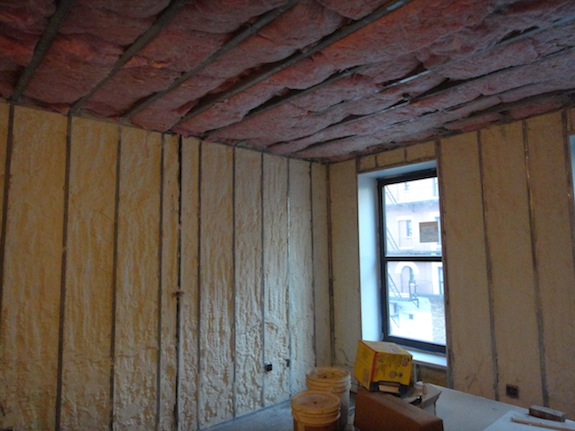
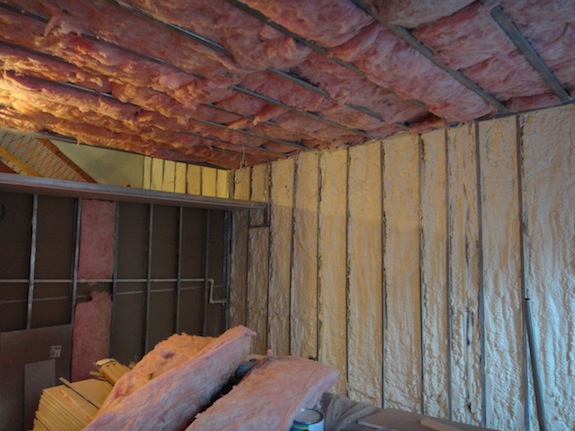
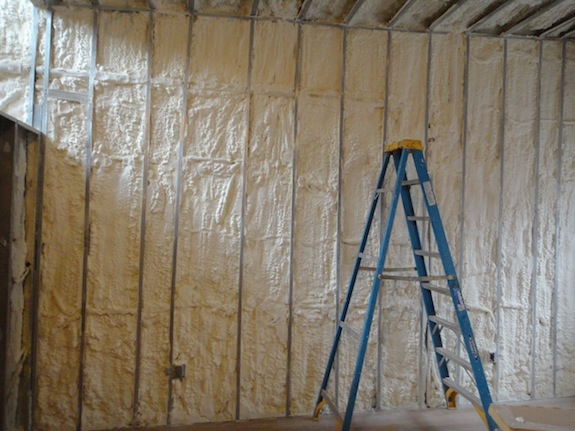

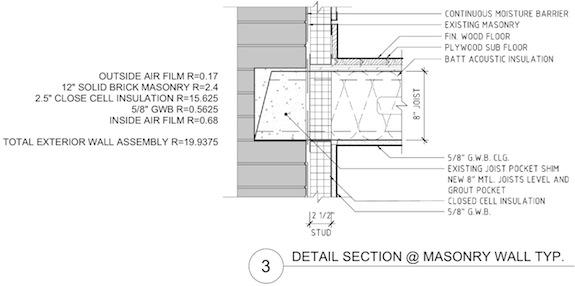
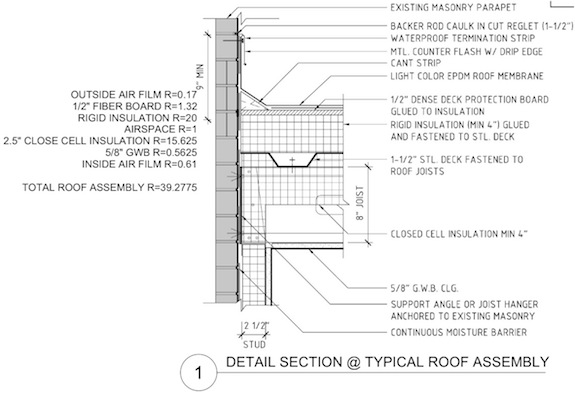
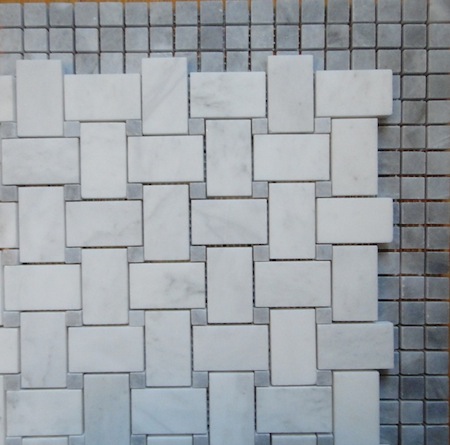
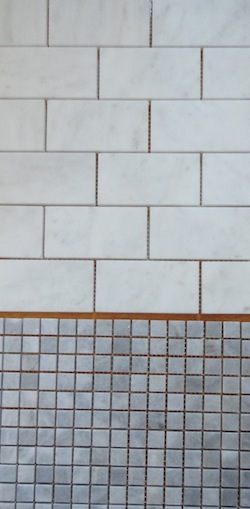
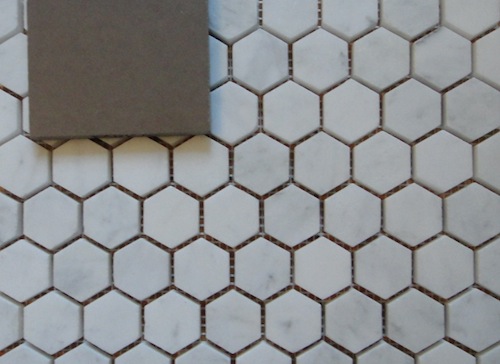
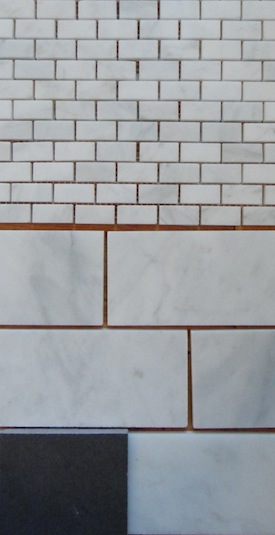 And lastly, in the master bathroom we’ll have dark gray porcelain tile on the floor – probably in a plank format (the dark porcelain tile shown in the picture is just a general direction of where we’re headed – not the actual tile), and then 3″x6″ Carrara subway tiles as wainscoting ($7/sq. ft. compared to a contractor’s price of about $11/sq. ft. at the major tile places). In the shower, above the wainscoting we’ll have Carrara “mini bricks” ($13/sq. ft.)
And lastly, in the master bathroom we’ll have dark gray porcelain tile on the floor – probably in a plank format (the dark porcelain tile shown in the picture is just a general direction of where we’re headed – not the actual tile), and then 3″x6″ Carrara subway tiles as wainscoting ($7/sq. ft. compared to a contractor’s price of about $11/sq. ft. at the major tile places). In the shower, above the wainscoting we’ll have Carrara “mini bricks” ($13/sq. ft.)
